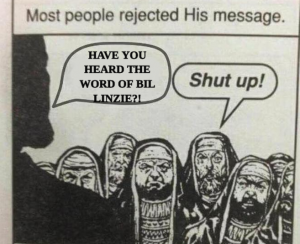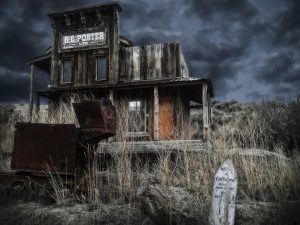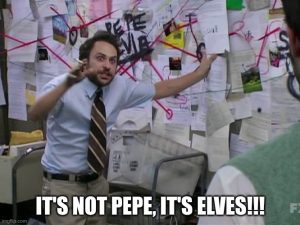A Note On The Term “Reconstruction”
Welcome back to another thrilling installment of this blog series examining the intersection of reconstruction and gnosis!
Before I get stuck in though, I just wanted to add a quick note about my use of the word “reconstructionism,” in this series. This can be something of a nebulous word among modern Heathens. At its core, it’s a methodology that allows scholars to experience a thing in as accurate a way as possible to potentially gain insights about that thing. However, it’s also come to signify a movement within modern Heathenry that sits at the opposite end of the (fake) spectrum from “woo.” This was the meaning we first began with in the beginning of this series. Some might even argue that this “recon” movement has developed a dogma of its own over time, thus making it a kind of sect. (And a weirdly evangelical one at that.)

Within the context of this series, I use the term “reconstructionism” and its variants to refer to either the methodology as I approach it or the movement as it relates to the “recon – woo” scale. When referring to the research phase of the process, I also use “scholarship” or “research,” as that’s the bulk of the work involved at that stage. However, it’s important to note reconstruction doesn’t just include research but experimentation and post-experiment evaluation as well.
Some Limitations Of Reconstructing Magic
It should probably go without saying, but magical reconstruction is a completely different kettle of fish from reconstructing medieval bow shooting (for example). I’ve discussed this before in previous posts, but there are a couple of extra points we need to bear in mind when reconstructing magic.
The first is that the ON primary sources were written from the observer’s perspective, often long after the events they describe took place. Sometimes there are further clues from archaeological finds (especially when they seem to support the textual sources and vice versa). However, the vast majority of the time, interpreting those finds is (to put it crudely) ultimately a matter of educated guesswork.

The second point relates to outside influences. Even textual sources that appear to have been written for practitioners are not without their problems. The most relevant example of this within the context of my own work are OE magico-medical texts like the Lacnunga. Though they clearly contain earlier remnants, these texts were written hundreds of years after the English officially converted. So, while there may be Heathen elements, there are also clear Christian and Classical influences in the mix as well, and it can be difficult to tease those different strands apart.
Step One: Building A Working Theory
One of the first things you’ll notice if you try experimenting with historical magic, is that there are “gaps.” We often talk about different magical traditions or currents as systems. And like any other kind of system, there are certain processes/actions/objects required to make a magical system work.
Historical Heathen magic was likely no different.
I find it helpful to think of magical systems as languages for communicating with and mediating issues with the Holy Powers and Unseen of this world. As with any other kind of language, there needs to be a grammar-like framework as well as some agreement on performance if it is to be understood.
So, part of the work involved in creating magical experiments has to include a working theory of how the system you’re experimenting with may have worked. Don’t worry too much about getting things wrong. At this point, it’s best to think in terms of degrees of accuracy anyway. You’re not aiming for the magical equivalent of being able to write a book in a second language (big shout out to Daniela Simina for that one!). Your aim here is to figure out enough to do the equivalent of successfully ordering a hotdog at a gas station without confusing or pissing off the staff.
When formulating your working theory/theories, it’s important to remember that magical systems are not separable from worldview. They exist within the worldview from which they were born. So, for example, as magic is very much concerned with fate, it’s wise to learn everything you can about how Historical Heathens may have thought about “fate.” You would also do well to read up about souls and eschatology, as well as how they may have viewed their neighbors (both Seen and Unseen) in this wondrous Middle-Earth.

Once you have your working theory though, then you can begin to think about the elements they may have thought necessary, the order of ritual, and well…everything else. Because working theories—while daunting—give you a place to start figuring out some of the missing pieces.
Filling In The Missing Pieces AKA “Plotholes”
If you’ve been practicing magic for any amount of time, you can probably read a ritual, mentally walk it though, and have a good idea of whether it’s going to work. In doing this (whether you realize it or not), you’re effectively assessing the “story” of the ritual/spell/working for “plot holes.”
At times, these potential plot holes reveal themselves through sources of similar practices or comparable sites within your focus culture/s. Other times though, you may find yourself suspecting a plot hole when looking into similar practices from related cultures or cultures with whom your focus culture/s had a lot of interaction.
Much rarer (at least in my experience) is when the author unintentionally leaves a hint of a plot hole via a stock phrase. A phrase that seems to indicate a practice/action/incantation the author considered so basic and common to their intended audience they didn’t think it worth the bother of writing down. Those of you who have studied the Greco-Egyptian Magical Papyri are probably very familiar with the phrase “do the usual.” This is the kind of hint I mean here.
However a plot hole is revealed though, my first step is to widen my field of research to try and find something with enough of a similar “shape” to fill those gaps. This is when I begin to look into sources from related cultures or later time periods from the same culture. (Because we clearly also need to add in some comparativism and retrospective methods too.)
Finally, I also pay attention to my gnosis as well as lessons learned from previous experiences and incorporate those too. Remember how I extolled the importance of writing everything down in the last post? Well, this is where all of that recorded gnosis and XP starts to come in.
Filling In The Missing Pieces: The “Not Attested But We Know This Shit Keeps Us Safe” Parts
The last kind of plot hole to consider are the practices and precautions we have no historical evidence for but know from experience to be smart. These include (but are not limited to) some mainstays of modern witchcraft practice like grounding/centering/shielding and energy manipulation.
There can be a temptation to try and be the most authentic and accurate little magical explorer that could. But as a witch, I’m nothing if not practical, and I’ve seen what happens when people don’t have those so-called “basics” down when engaging in this kind of work.
Magic isn’t safe, and this is especially the case when working outside established traditions. Established traditions have structure and methods of working and people generally have an idea of how rituals are going to go. Moreover, when things do go wrong, a practitioner working within an established tradition has a layer of protection and backup people like myself don’t have. Let’s just say things can get a little wild when you’re building experiments from historical sources, frameworks of educated guesses, and gnosis.
Now don’t get me wrong, it’s also mad fun. This kind of work makes my souls sing and has led me to the most incredible experiences. Performing a ritual I’ve put together for an experiment with next to zero idea of what’s going to happen next is my happy place.
But it’s really not safe.
So, regardless of historical accuracy, I recommend adding some safety mechanisms to your experiments as well. Those so-called “basic” witchcraft skills can actually be the difference between “Eh, things got a bit hairy” and “Yeah, I was lucky to get out in one piece.”
As an aside, if you don’t believe the Unseen can really harm you and/or that you’re somehow in charge/are owed something/are more powerful because you’re a witch, then please keep away from this work. To put it bluntly: you’d be a danger to yourself, anyone who works with you, and eventually those who live with you as well.

I also recommend that you create amulets, make sure your go-bag includes apotropaics for if (when) shit goes sideways, and begin a purification practice if you don’t already have one. Some beings/energies/kinds of work aren’t exactly good for humans from a health/wellness perspective. So, find ways to get clear that work for you. (If you dig smoke cleansing, here’s the third in a series of posts about that very thing.) These are important for staying healthy/well. Ideally, you’ll have methods/things you can use directly after finishing an experiment and methods/things you can use when you get home and in the following days. Additionally, you may find that you have instincts that kick in after certain types of work. One example of such an instinct that Martin Coleman kind of also wrote about in Communing With The Spirits is post-necromancy horniness. As long as those instincts are not harmful to yourself or others, my advice is to go with them. Go forth and bang that necromancy out of your system (or whatever).
Finally, don’t forget to figure out some protocols for wrapping up your experiments, containing anything that needs containing, and getting clear of any influence/effects/interlopers before you get home. Please bear in mind that “going sideways” does include the possibility of things like possession and plan accordingly. It’s wise to have a buddy system in place; people you or your family members can call if extra help is needed.
Final Words
I was initially hoping to stick to a single post on experiment building. However, as with all things in this series, it didn’t quite work out like that, and when my post tipped 5000 words, I figured it was best to split it into two posts. In the next post (now I’ve gotten all of those caveats out of the way), I’m going to talk about how I put together my first Götavi grid experiment, the underlying reasons why I made the choices I did as well as all the fuck-ups along the way.
So, until next time. Be well.
